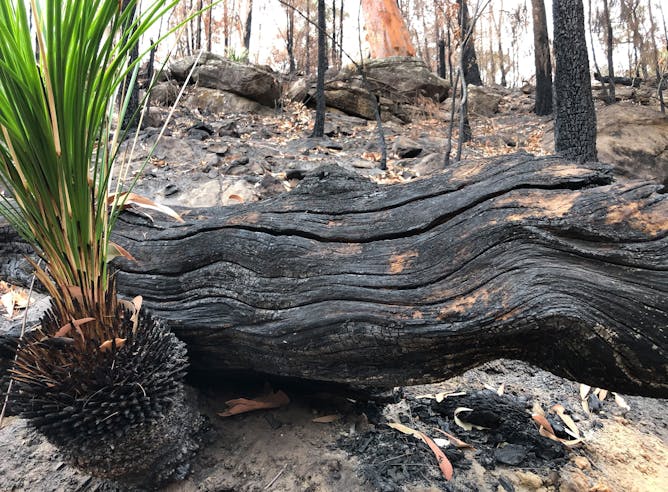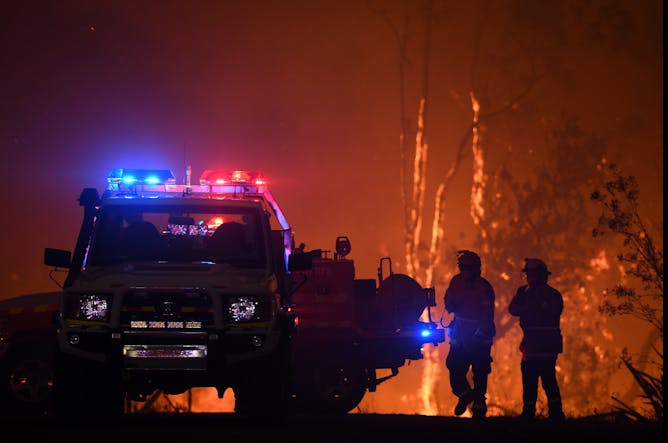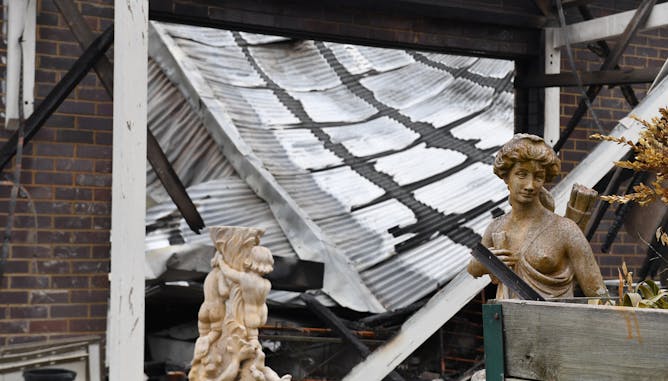|
|
|
Editor's note
|
|
As Australia’s homes, native fauna and flora burn, the people who have called Australia home for more than 60,000 years are experiencing the trauma in a vastly different way to non-Indigenous people.
With their culture and livelihoods tied to the land, Aboriginal people are watching it become engulfed in flames, and their ancient scarred trees, spiritual plants and animals, and their native food sources turn to ash.
Bhiamie Williamson, a Euahlayi man from north-west New South Wales and south-west Queensland with family ties to north-west Queensland, puts it best, writing: “For Aboriginal people then, who live with the trauma of dispossession and neglect and now, the trauma of catastrophic fire, our grief is immeasurably different to that of non-Indigenous people.”
But from perpetual grief comes enduring resilience, forged through centuries of colonisation. This means fire-affected Aboriginal communities are well-placed to recover, and can do so quickly, with the right support.
As Australia turns its gaze to recovery, Aboriginal people must not be left out. The agency leading recovery efforts must engage with Aboriginal communities in culturally sensitive ways, or risk inflicting more trauma.
|
Anthea Batsakis
Deputy Editor: Politics + Society
|

|
|
Top story
|

Regrowth one month after fires at Colo Heights, NSW. A legacy of displacement and racism inflames bushfire trauma for Aboriginal Australians.
Vanessa Cavanagh
Bhiamie Williamson, Australian National University; Jessica Weir, Western Sydney University; Vanessa Cavanagh, University of Wollongong
As Australia picks up the pieces after the fires, we must understand the unique grief Aboriginal people experience from a loss of country.
|

It’s the first time since overlapping records began that Australia experienced both its lowest rainfall and highest temperatures in the same year.
dan HIMBRECHTS/AAP
David Jones, Australian Bureau of Meteorology; Karl Braganza, Australian Bureau of Meteorology; Skie Tobin, Australian Bureau of Meteorology
The Bureau of Meterology says persistent drought and record temperatures were a major driver of Australia's fire activity, and the context for 2019 lies in the past three years of drought.
|

The burnt out remains of a house in the Southern Highlands town of Wingello. There are three main factors to consider when thinking about the impact of bushfires on your personal treasures – smoke, heat, and water.
Mick Tsikas/AAP
Vanessa Kowalski, University of Melbourne
Items can be recovered after a fire – here is how to look after them.
|
Environment + Energy
|
-
Marc Hudson, Keele University
The horror of the last weeks and months are a compressed version of the last 30 years in bushfire and climate politics.
-
John Woinarski, Charles Darwin University; Brendan Wintle, University of Melbourne; Chris Dickman, University of Sydney; David Bowman, University of Tasmania; David Keith, UNSW; Sarah Legge, Australian National University
In a matter of weeks, the fires have subverted decades of dedicated conservation efforts for many threatened species.
-
Dale Nimmo, Charles Sturt University
Wildlife can smell and hear a fire coming, and have developed novel ways to evade it. But they must watch out for cunning predators rushing in for a feed.
|
|
Health + Medicine
|
-
Katie Lee, The University of Queensland; Monika Janda, The University of Queensland
Do you know people who cling to myths about sunscreen? Here's the evidence to convince them they're wrong.
-
Sarah Robertson, University of Adelaide; Louise Hull, University of Adelaide
Pregnant women exposed to bushfire smoke face a higher risk of complications including gestational diabetes, high blood pressure and giving birth prematurely.
|
|
Arts + Culture
|
-
Benjamin T. Jones, CQUniversity Australia
If Harry and Meghan are seen as separated from the monarchy, or worse yet, victims of it, its long term survival is threatened.
-
Stephen Gaunson, RMIT University
True History of the Kelly Gang marks the tenth screen version of the Ned Kelly outbreak, and is a more violent and dark – and therefore true – telling.
|
|
Business + Economy
|
-
Geoff Hanmer, UNSW
Plugging ventilation holes in walls helps, but there are dangers.
-
Peter Martin, Crawford School of Public Policy, Australian National University
Australia has an outsized ability to influence others.
|
|
Science + Technology
|
-
Juan Pablo Guerschman, CSIRO
By understanding how bushfire maps are created, and what their features represent, you can get better at spotting fake ones.
-
Emma Hutchison, The University of Queensland
Celeste Barber's $45 million fundraiser is amazing, but battling Australia's fires should be an ongoing effort. With the help of social media, it can be.
|
|
Politics + Society
|
-
Ian Parmeter, Australian National University
Although neither side apparently wants conflict, tensions remain over the presence of US troops in Iraq and Iran's decision to walk away from part of the 2015 nuclear deal.
-
Krystian Seibert, Swinburne University of Technology
It's worth thinking carefully about how to give, to ensure you're not wasting your contribution or inadvertently making things worse.
|
|
Cities
|
-
Johan Barthélemy, University of Wollongong
Abandoned trolleys are an all-too-common sight. A solution to this intractable problem depends on a combination of policy and legal changes, public engagement and tracking technology.
|
|
| |
Featured jobs
|
|
|
| |
| |
| |

|
| |
| |
| |
Featured events
|

|
RMIT University City Campus, Melbourne, Australian Capital Territory, 3000, Australia — RMIT University
|

|
The Great Hall, The Quadrangle, University of Sydney Camperdown, NSW 2006, Sydney, Australian Capital Territory, 2006, Australia — University of Sydney
|
|
|
|
| |
| |
| |
| |
| |
|
|
|
|
|
|
|